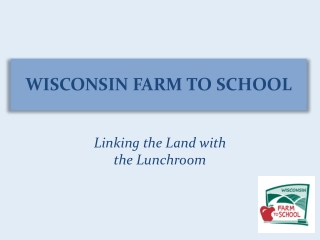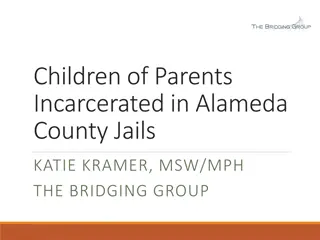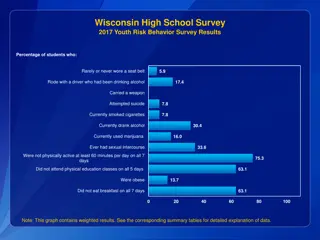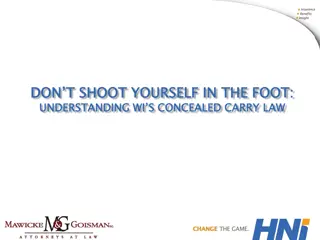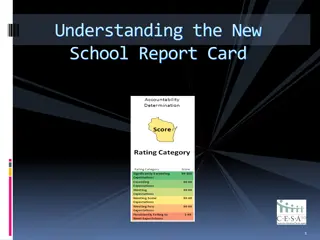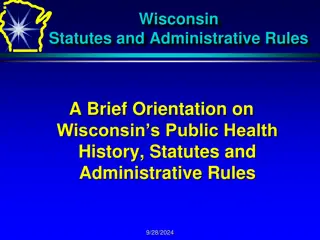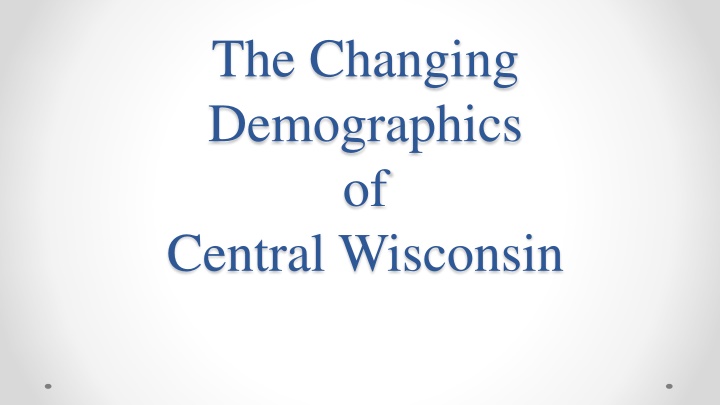
Changing Demographics and Workforce Trends in Central Wisconsin
Discover the shifts in demographics and workforce dynamics in Central Wisconsin, including challenges like Baby Boomer retirements, population migration, and skill shortages. Explore the current state of Wisconsin's labor market, unemployment rates, and the growing influence of Millennials. Gain insights into the future outlook for the region's workforce and economic landscape.
Download Presentation

Please find below an Image/Link to download the presentation.
The content on the website is provided AS IS for your information and personal use only. It may not be sold, licensed, or shared on other websites without obtaining consent from the author. If you encounter any issues during the download, it is possible that the publisher has removed the file from their server.
You are allowed to download the files provided on this website for personal or commercial use, subject to the condition that they are used lawfully. All files are the property of their respective owners.
The content on the website is provided AS IS for your information and personal use only. It may not be sold, licensed, or shared on other websites without obtaining consent from the author.
E N D
Presentation Transcript
The Changing Demographics of Central Wisconsin
Human Capital Dilemma Baby Boomer Retirements - Losing the Majority of Workforce (Most Skilled and Knowledgeable) People are having less kids, less people to fill jobs o Cost of having kids is increasing o Millennials are having kids later in life People Migrating to Other Parts of the Country o Wage Scale o Culture o Opportunity/Experience
U.S. Shortage Statistics United States Economy will be an estimated 18 million skilled workers short of demand by 2020. (Manpower) Wisconsin has lost the 7th largest portion of educated talent to outbound population migration. Baby Boomers expected to be gone from the workforce by 2023. (74.9 million living in the United States). Millennials will make up the workforce majority by as early as 2021. (75.4 million between 18-34 in the United States Currently).
Whats Wisconsin Look Like? Unemployment Rate 3.0% Dec. 2017 o Hit 17 year low in April 2017 (3.2%) 15.6% of population is over 65 8.0% of population is disabled 12.1 % live below poverty line *Above stats denote 35.7% of the remainder Regional Labor Shed: 60 miles
Job Share/Diversity Analysis Source: 2013-2017 5-Year American Community Survey (U.S. Census Bureau)
Population Shares Source: 2013-2017 5-Year American Community Survey (U.S. Census Bureau)
Bachelors Degree Source: 2013-2017 5-Year American Community Survey (U.S. Census Bureau)
Employment By Sector Source: Quarterly Census of Employment and Wages (U.S. Census Bureau)
Grow Your Own? K-12 Assessment and Birth Rate Region Expected to lose 49, 120 workers to retirements by 2023. Region had 4,339 Births last year (9 counties) U.S. Birth rates reaching declining lows of 1.86 babies/year, well below the 2.1 per needed for a stable population. (ages 15-44) Region lost 3,528 kids (9 Counties Measured 2005-2006 to 2015-2016)
So, Whats Our Problem? Losing the Majority of Workforce (Most Skilled) People are having less kids, less people to fill jobs As Supply Shrinks, demand increases, drives inflation. Many companies will move to automation and technological Innovation to offset shortage and inflation. o (Computer skills and engineering skills will be in high demand). New jobs created will require more skill.
Regional Effect: We are a Predominantly Rural Region by Classification Our Entire Region needs to work together (ensure quality of life, sustainable tax base, and economic impact)
Most In Demand Jobs in NC Wisconsin Through 2028 Teachers Engineers IT/Computer Science Registered Nurse CNA Medical Assistant Diesel Technician Machinist Welder Carpenters/Construction Pipefitters Electricians Maintenance Technicians Auto Technicians and Collision Heavy Equipment Operator HR Accountants
Sector Analysis Driver Economies (Pillars) Manufacturing (1:4) Healthcare Transportation and Warehousing Finance and Insurance *In Northern Rural Counties (Hospitality and Tourism in vitally important) Emerging Economies (Most Growth Potential) Construction Healthcare Wholesale Trade Information/Computer Science Management of Companies and Enterprises Agriculture
Strategies for Succession, Sustainability, and Growth Grow your Own Connect Business, Workforce Development, and Economic Development resources with all levels of education Develop defined career paths in high demand Develop robust career pathways and skills matching Create and build roadmaps to business and industry (Apprenticeship, Workforce Resources, dual credit, competency based learning, subsidized education, soft skills and STEM skill development)
Trends And Branding Have to make offers to tech college students semester 1 of year 1 Get Creative with benefits offers Don t Undervalue professional development reinvestment Innovative ways to shift culture Branding
Questions, Assistance, or Follow Up Derek Heikkinen Business Director NCWWDB 715.966.2762 dheikkinen@ncwwdb.org Mitchell Rupp DWD Chief Economist WDA 6 Mitchell.rupp@dwd.wisconsin.gov 715.261.8728
Miranda Lezcano Job Service Director WDA 6 DWD 715.261.8742 Miranda.Lezcano@dwd.wisconsin.gov

